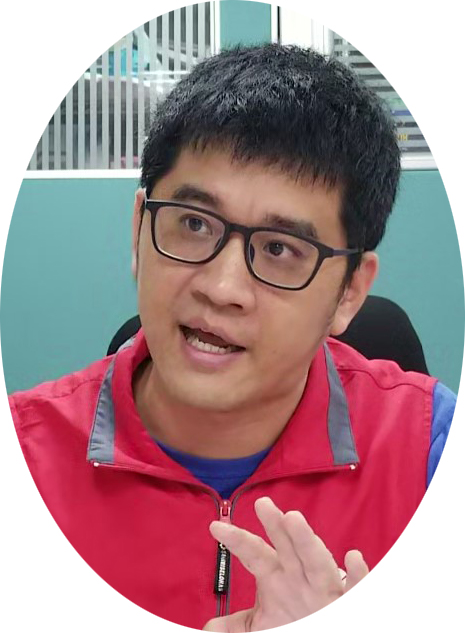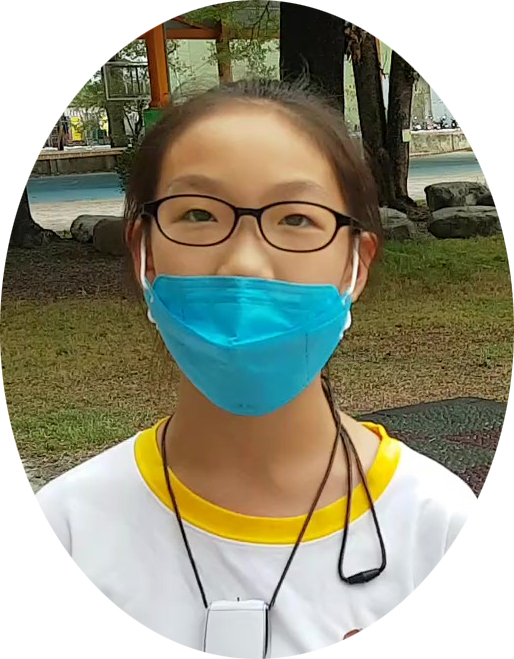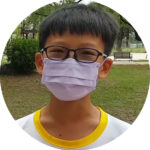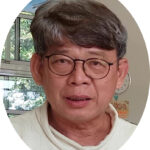Reporters / Chen, Liang-yi , Chen, Yun-chen , Lai, Pei-ching , Li Wei

Due to low birth rate and aging society in Taiwan, intergenerational learning, a new form of long-term care for the elderly, has emerged. However, the general public’s misunderstanding and established impressions of the elderly have become a major obstacle to the establishment of intergenerational learning bases;thus, reaching a consensus with schools and parents is particularly important.
Many developed societies face the issue of decline birth rate and aging society, and Taiwan is no exception. Back in 1993, Taiwan has officially entered the rank of an aging society, with the elderly over 65 accounting for 7.1% of the population. In 2018, with a ratio of 14.6%, Taiwan officially entered the aging society. The National Development Council has estimated that this value will reach 20.8% and with this population structure, Taiwan will officially enter the super-aged society in 2025.
However, the number of newborns in Taiwan has been decreasing year by year since 1981. In 2022, the number of newborn hit a historic low of only 139,000, with an estimated annual figure of only 80,000 newborns by 2070. As a result, primary schools are the first to face reduced enrollment and even under enrollment, leading to many idle classrooms on campuses. This has nonetheless become an opportunity for the development of “intergenerational learning” programs in Taiwan.


In 2015, Su, Zhe-neng, Deputy Director of Pingtung County People’s Hospital, returned to his alma mater, Forward Elementary School, (前進國小) in Pingtung County, southern Taiwan, and transformed the idle classrooms resulting from the low birth rate into classrooms for the elderly. He placed particular emphasis on caring for elderly people with dementia. Thus, Forward Elementary School’s Lecia Elderly and Child Learning Center, the first school in Taiwan to implement intergenerational learning, was established. Su pointed out that intergenerational learning is definitely feasible in Taiwan.
Since 2017, the Ministry of Health and Welfare has been promoting dementia care service plans by subsidizing local governments in setting up dementia community service centers to provide case care and caregiver support services, as well as to establish shared care centers. Lin, Jin-li, Executive Supervisor of the Taiwan Home Care Service Strategy Alliance, stated that this policy allows doctors to gain more insights into the daily life of people with dementia and have a better understanding of their daily routines. Lin further stated that by setting up service centers in schools, students can also learn that people with dementia are no different from others, thus establishing a more friendly attitude toward the elderly afflicted with this kind of illness.
Good Communication is Important
Located in the Wanhua District of Taipei City, AiLai Learning Academy was established in 2019. According to Xie, Yu-zeng, AiLai’s counselor, prior to selecting the location in Lao Song Elementary School, they had conducted multiple site surveys. The site was chosen because of its freight elevator and adequate barrier-free restrooms that fully meet the needs of the elderly. The next step was to report on what the dementia group is and the content of the curriculum in school’s faculty meetings.
Moreover, the representatives of concerned parents were informed about the arrangement of the routes and the use of space which would not affect the students’ movement on campus, and that the mental and physical conditions of patients with dementia were evaluated and screened. Finally, both the school and parents felt at ease and consented to the establishment of intergenerational learning center at the campus.

Lin, Jin-li stated that in the process of establishing intergenerational learning at campuses, the concerns of parents and schools were mostly related to safety, space, and whether it would affect students’ learning or not. Moreover, when accidents occur with the elderly on campus, the issue of responsibility is also important. However, since “AiLai Learning Academy” is hosted by hospitals, and the elderly’s routes and use of space will not affect students’ movement on campus, the doubts of the concerned school and parents are eliminated.

Li, Wen-ren, deputy director of the Enterprise Publicity Group of the Republic of China Elderly Welfare Promotion Alliance, pointed out that communication with schools, parents, and neighbors plays an important role in intergenerational learning promotion. Li also emphasized that the location of intergenerational learning should be closely linked to the community. If it is the grandparents or neighbors of the children who accompany them to school, parents’ stress will not be as great.
Su, Zen-neng also stated that intergenerational learning has already been implemented at Forward Elementary School in Pingtung for seven years, and there has never been a situation of elderly violence which many parents worry about. He said with a smile, “Children run faster than the elderly, so how can they be bullied by the elderly? In fact, parents here like this kind of environment because children have learned more about how to interact with their elderly relatives at home.”


When asked about the feeling of having classes with the elderly, Jian, Xiao-jie, a fifth-grade student at Forward Elementary School, said, “I was a little nervous, but after getting along with them for a while, I become more comfortable, so it’s all well now.” Cai, Wei-tong, whose two children studied at Forward Elementary School in second grade and the kindergarten, shared, “I knew there were elderly people in this school before both of my sons study here, I think I am quite happy about the arrangement because children can interact with the elderly.”

Cai added, “Not only is this good for the children, it is also conducive to the well-being of the elderly both physically and psychologically. Instead of staying at home all day long, elderly can go somewhere, so I am for intergenerational learning. ”
Courses Designed to Fit Different Themes
Lin, Jin-li stated that understanding the possible diseases and behaviors of the elderly should be looked upon as a new wave of universal health education in aging society. If this concept can be implemented in basic education, it will be deeply rooted in people’s heart so that they can understand how to incorporate the concept of co-learning with the elderly. He also stressed the importance of designing curriculum in intergenerational learning so that children can understand what it takes to interact with the elderly people.
Lin pointed out that the courses of intergenerational learning should be designed for different purposes, and must also be equipped with “helpers,” be they professionals or children to ensure that the classes run smoothly without much contingencies. Essentially, it is important to allow the elders to guide the children during class sessions rather than just letting the children stand by. In fact, these classes are designed to re-establish the inner self-worth of the elders, to help the children learn more about how to live with the elders, and most importantly, to achieve two-way learning along the process.


Chen, Yi-xun, a fifth-grade student at Forward Elementary School, said that he would come to the classroom of elders to pinch clay, make lanterns or learn Taiwanese dialect every Tuesday. Moreover, Hong, Pei-xuan, a Forward Elementary School’s Lecia Elderly and Child Learning Center’s counselor, explained that the course schedule includes health exercise and stretching courses to help elderly people maintain the agility of their limbs. Elderly are also paired up to do winding painting or play board game to enhance their brain flexibility and stimulate their creativity.

In the class session, Lin, Jin-fa, an elderly who signed up for Forward Elementary School’s Lecia Elderly and Child Learning Center, rolled up his trousers to display the scars on his leg caused by a severe car accident which confined him to a wheelchair many years ago. Moreover, he was suffering from dementia in his old age. Lin said excitedly, “I went back to the hospital for rehabilitation after half a year before I joined the classes here. Later, the test report showed that my body functioned normally, and now I can walk by myself again. I am really grateful.” Among other things, the environment here is clean, and the atmosphere is serene, so he could work out to keep himself strong and fit. He said with a smile, “Being surrounded by children makes me happy .”

Room for Improvement
Although intergenerational learning programs have received favorable responses, there are still rooms for improvement. In order to reassure parents and schools, most of the intergenerational learning programs just stagger the activity spaces and times of the elderly and children. Assistant Professor Zheng, Yao-ren of the Silver Industry Management Department at Chaoyang University of Technology sighed, “In fact, this does not have any significance. It’s just the release and use of space, and it doesn’t really achieve substantive intergenerational ‘learning’.” Therefore, it is necessary for the authority concerned to contemplate on how to promote mutual learning between the two generations and bring substantive learning and benefits to both the elderly and the children.
Lin, Jin-li believed that the true meaning of intergenerational learning should be “the older adults and children completing something that is of value to each other together,” allowing both sides to guide each other in their respective areas of expertise. This is also why the curriculum of intergenerational learning must be carefully designed.

Li, Wen-ren also pointed out that even if there are places where the elderly and children can interact, they often only consider how children can help the elderly, which is just a one-way learning. He joked, “Parents shouldn’t just see children helping the elderly with back massage.” Therefore, developing courses that allow communication between both parties should be the direction for current elderly and children learning. For example, the elderly can expand children’s horizons by sharing their past work experience and skills, while children can teach the elderly how to use 3C products or electronic products.
Xie said that she hopes all the elderly and children learning centers in Taiwan can be systematically integrated in the future, instead of just being in a state of separate schools for both parties. She also looks forward to past experiences of setting up elderly and child institutions being shared with future institutions, in order to achieve a win-win situation for both the elderly and the children.
It goes without saying that the overall goal of intergenerational learning program is to promote learning and across generations, to put the concept of lifelong learning into practice and to cultivate a closer relationship between older adults and children. Hopefully, Taiwan can take an even bigger step in promoting this meaningful program.



